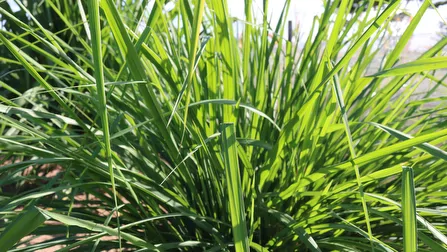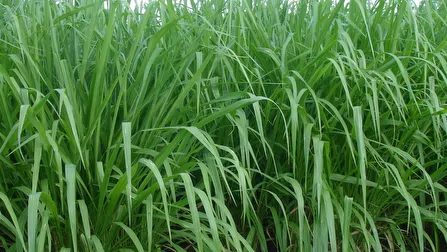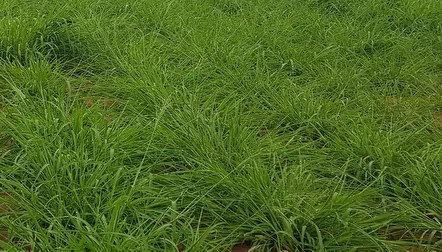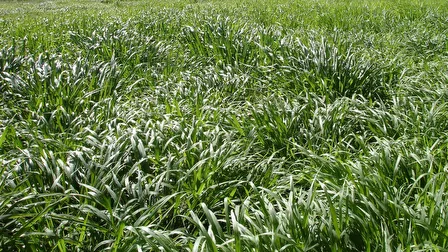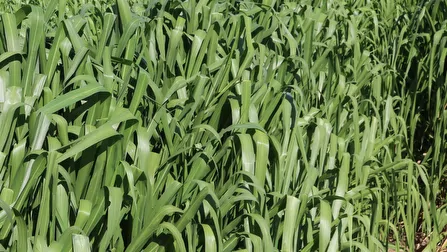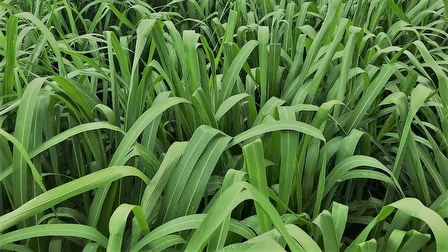Indicação
É uma forrageira de boa qualidade nutricional indicada para bovinos, ovinos, equinos e caprinos. Indicada para áreas de média a alta fertilidade e em regiões com climas mais amenos. Pode ser utilizada em pastejo direto, fenação ou silagem. Tem boa palatabilidade e apresenta folhas e talos finos.
Megathyrsus maximus cv. Aruana
Panicum maximum cv. Aruana
Média a alta fertilidade
Pastejo direto, fenação e silagem
15 a 18 t/ha/ano de matéria seca (M.S.)
9 a 15%
Muito boa (acima de 55%)
Muito boa
Média
Boa
Perene
Origem
Cultivar lançado comercialmente no Brasil pelo IZ – Instituto de Zootecnia de Nova Odessa SP em 1989. Proveniente da África através de sementes enviadas pelo Dr. Jorge Ramos Otero em 1974.
Características Morfológicas
Trata-se de uma gramínea cespitosa de porte médio (70 a 90 cm de altura), apresenta colmos finos e piloso, as folhas são estreitas, de cor verde escuro, possui grande quantidade de perfilhos, possui boa distribuição da forragem produzida durante o ano (até 40% no inverno).
Características Agronômicas
É uma espécie forrageira exigente em fertilidade do solo, mas apresenta maior eficiência na utilização do fósforo do solo. Trata-se de uma cultivar rústica, vigorosa e de alta produção e qualidade de forragem.
Utilização e Manejo
A Aruana é uma forrageira de boa qualidade nutricional (até 12% P.B.) e digestibilidade de até 64%, podendo ser indicada para todas as categorias de bovinos, equinos, caprinos e ovinos. Pode ser ingerida na forma de feno, silagem ou pastejo direto em sistema rotacionado. Em pastejo rotacionado é recomendado um intervalo de descanso de 25-28 dias. Deve-se evitar que a planta ultrapasse a altura de 1,50m. É recomendada para solos de média a alta fertilidade, e em climas mais amenos da região sul/sudeste do país.

